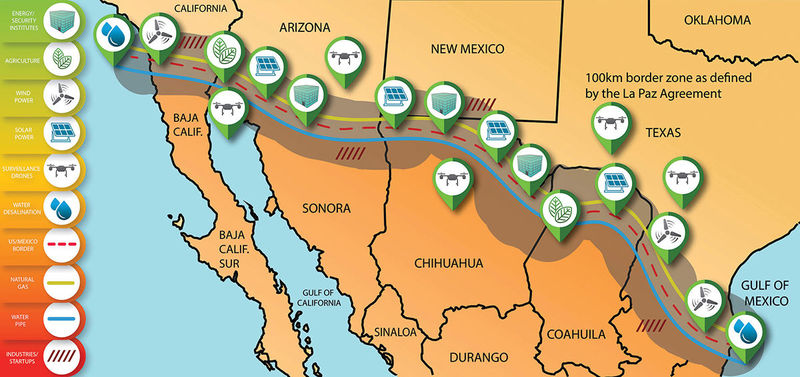 Purdue University/Jorge Castillo Quiñones
Purdue University/Jorge Castillo Quiñones
The United States-Mexico border is a nearly 2,000-mile expanse of potential solar and wind energy. Water from the Gulf of Mexico and the Pacific Ocean also offers a vast resource to serve the region’s needs through the use of cutting-edge desalination technology.
A consortium of 28 scientists, including Notre Dame’s Kenneth Christensen and Harindra Fernando, have developed a proposal to realize those environmental benefits while creating jobs and improving border security. Instead of a wall, the proposal calls for a wide-ranging public-private partnership “to build a secure, large-scale economic development zone,” featuring solar panels, wind turbines, natural gas pipelines and desalination plants that could put an often barren and contentious region to productive use.
The consortium’s white paper proclaims that the initiative “has the potential to make the desert bloom” into an area of enormous agricultural production, relieving anticipated food shortages while creating wealth for both countries and reducing carbon dioxide emissions into the atmosphere. “Leaders on both sides will receive accolades across the world for their contributions to the environment and economic growth of the region,” the authors contend.
Although border security is an explicit goal of the proposal, it is presented as an alternative to a wall, a win-win for both countries that would help control illegal immigration.
“In contrast to a passive barrier that physically stifles innovation and collaboration between the U.S. and Mexico,” Christensen says, “this energy-water corridor would inspire and support economic, social and scientific advances and transform the regional enterprises along the border to the benefit of both countries.”